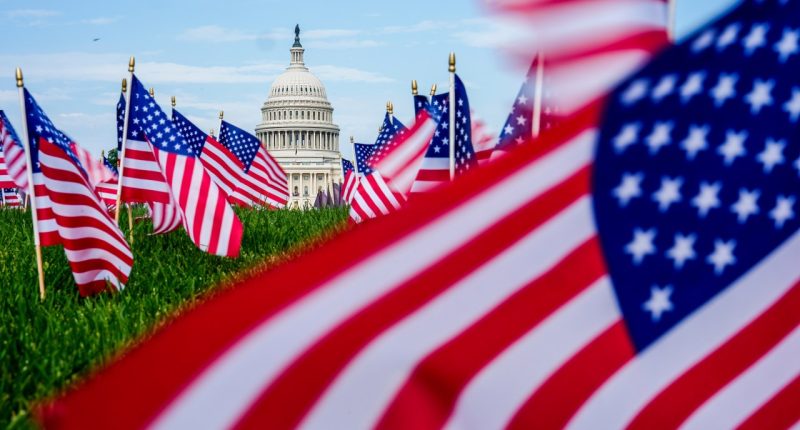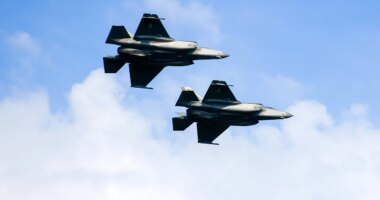Share this @internewscast.com

TOPEKA, Kan. (AP) — Often credited with crafting the first U.S. national flag at the behest of George Washington, as her descendants assert, Betsy Ross might find today’s Flag Day intriguing.
In Ross’ era, flags identified ships and directed soldiers amid the chaos of battle smoke and noise. The deep respect many in America have for the flag, known affectionately as Old Glory, surfaced during the Civil War. At that time, keeping the flag flying in battle was so important that the Union army considered it a great honor, and soldiers frequently risked their lives to bear it.
Flag Day began with local observances after the Civil War, leading to a federal law in 1949, during World War I veteran Harry Truman’s presidency, which officially set June 14 as Flag Day. Truman proclaimed the U.S. flag as a symbol of freedom and a guard against oppression the following year.
Americans’ attachment to their flag is imbued with feelings that in other nations might attach to a beloved monarch or an official national religion. The flag is a physical object “that people can relate to,” said Charles Spain, director of the Flag Research Center in Houston.
“If you put a flag on a pole, the wind makes it move,” Spain, a retired Texas Court of Appeals justice, added. “Therefore, the flag is alive.”
What does Flag Day celebrate?
The holiday marks the date in 1777 that the Continental Congress approved the design of a national flag for what to Great Britain were rebellious American colonies.
It set the now-familiar 13 alternating horizontal stripes of red and white, one for each self-declared U.S. state, along with the blue upper quadrant with white stars. The Journals of Congress from 1777 says that the stars represented “a new constellation,” but a 1818 law mandated one white star for each state.
National observances for Flag Day began well ahead of the law signed by Truman, with a proclamation issued by President Woodrow Wilson in 1916.
Wilson’s action came several decades after communities began Flag Day celebrations. In 1891, Philadelphia held its first — at one of Ross’ former homes — and it evolved into an annual, weeklong Flag Fest.
The small village of Waubeka, Wisconsin, north of Milwaukee, claims the first observance in 1885.
According to the National Flag Day Foundation headquartered there, a 19-year-old teacher in a one-room school, Bernard Cigrand, put a small flag on his desk and had students write essays about what the flag meant to them. He advocated a national holiday for decades as he worked as a dentist in the Chicago area.
When did
the U.S. flag become sacred to many Americans?
Lisa Acker Moulder, director of the Betsy Ross House historical site in Philadelphia, said that for Ross, conferring with Washington would have been the key point of her account. The U.S. flag wasn’t as venerated before the Civil War in 1861-65 as it is now.
Keeping flags aloft was crucial to maneuvering troops in Civil War battles, and that made flag bearers big targets for the enemy. They couldn’t shoot back and had to stand tall, said Ted Kaye, secretary for the North American association for flag scholars, known as vexillologists.
Both sides’ propaganda told soldiers that carrying a flag into battle was an honor reserved for the most morally fit — and that view took hold, Kaye said. One Michigan cavalry regiment’s red flag declared, “Fear Not Death –Fear Dishonor.”
“This created this cult of honor around these battle flags, and around, by extension, the national flag,” Kaye said.
Why was the Civil War so important?
Civil War soldiers showed extraordinary courage under fire to keep their colors aloft, and multiple flag bearers died in single battles, said Matt VanAcker, who directs a now decades-old project at the Michigan Capitol to conserve flags from the Civil War and later conflicts. Michigan has collected about 240 old battle flags and had a display in its Capitol rotunda for decades.
Replicas have replaced them so that the original banners — and pieces of banners — can be preserved as a physical link to the soldiers who fought under them.
“Many of the flags in our collection are covered with bullet holes,” VanAcker said. “A lot of them have blood stains — the physical evidence of their use on the battlefield.”

















